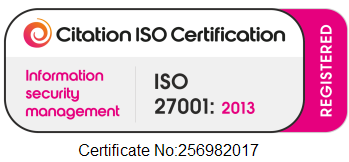Learn how to Future Proof your Hiring Methods
Every organisation has had to make drastic changes to its business in the last few months.
For starters, the original recruitment process was no longer suitable. As businesses closed, there was no budget with no need to recruit. Their current staff needed to be furloughed and business went remote.
We did not predict nor prepare for these changes, but none the less, inevitable for survival.
Now, as normality returns, the functionality of our processes have been changed permanently, as it is clear, our trusted traditional methods are no longer viable.
We now know that our processes need to be ‘future-proofed’ to make them more adaptable.
So, how do we achieve this security in our hiring methods?
Build a Talent Pool
Begin to be pro-active by building a talent pool. In one of our previous blogs posts, we discussed how key industries such as healthcare, retail and logistics would have benefited from a talent pool when their need to recruit soared. Instead of having to manage and screen thousands of applicants, they could have contacted those already deemed suitable in their talent pool, saving them a lot of time and money. When building your talent pool, separate candidates into categories, based on location, skillset and the success of their previous application. Then keep in contact. Nurture your relationship with them. This ensures when you do get in contact with them, they are more likely to engage with you. And importantly, use a resource like an ATS that keeps your data secure and GDPR compliant.
Put New Remote Working Policies in Place
Our processes need to be updated so they can run seamlessly from anywhere, at any time. This pandemic has proved that WFH, can be done. Remote working is a change that is here to stay in some way, shape or form, and it is a change that many businesses will need to accept and adapt to. Remote working offers a sense of flexibility to employees, something which was already becoming increasingly important pre-pandemic. It means that candidates will now expect this as a given and will particularly favour those who support it. Although every business found themselves having to adapt to a remote module, this module will now have to be assessed for its suitability on a more permanent basis.
Meet new Candidate Attitudes & Behaviour
Before, we were recruiting in a candidate-driven market, working to attract the 70% of passive job seekers. But now, as unemployment figures continue to rise, the behaviours of candidates have changed once again. This means we need to revaluate our processes to meet this new behaviour. For starters, employers will again have a bigger pool of fish to choose from, which is great, but that also means you need the resources to effectively manage it. Putting a sufficient sourcing strategy in place to cut through the noise and having the tools to deal with the volume of applicants.
Invest in Automation
Many organisations are now showing more of an interest in using technology to automate their recruitment process and rightly so. CV Library’s research revealed that 26.1% of hiring professionals have invested in new technologies to help manage their processes, and this is only set to increase as normality returns. Whether that is investing in an Applicant Tracking System, a Multi-poster, a data management system or some onboarding software, all will each make an incredible difference to your recruitment methods to future proof them. Not communicating with candidates efficiently and informing them of their progress, whether successful or not, should be a thing of the past.
Re-think Roles & Invest in Re-skilling
As our processes change, so do our responsibilities. Thanks to new tools and technology, recruiters will find themselves no longer flooded with administrative tasks. This means their focus now needs to move elsewhere. The time saved on tasks of the past, can be used to focus on creating a better candidate experience, one that is more personalised. With more automation, comes less human interaction, this means candidates will become even more appreciative of this sort of experience and talent attraction professionals should utilise technology to work with this cause, not against it. As roles change, and some emerge, this also means more will need to be invested in re-skilling.
Utilise Video
Video was already proving essential in engagement. But now it is used for far more than that. According to CV-Library, 87% of recruiters introduced video interviews during the pandemic. It is clear video interviewing has an array of benefits and not just for when face to face encounters are not physically possible. It is a great way to pre-screen applicants before taking them further in the recruitment process. Video interviews are a great resource that still provides personal interaction, but that is time and cost-efficient for all parties. But, the use of video should go so much further than video interviews. Organisations should be looking for a new and creative way to incorporate them in their processes, whether that be for an office tour, a Q&A or a new way of meeting the team.
For further advice on how to future proof your recruitment strategies, get in touch.
Subscribe to our newsletter!




Comments are closed